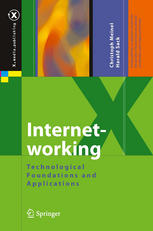

Most ebook files are in PDF format, so you can easily read them using various software such as Foxit Reader or directly on the Google Chrome browser.
Some ebook files are released by publishers in other formats such as .awz, .mobi, .epub, .fb2, etc. You may need to install specific software to read these formats on mobile/PC, such as Calibre.
Please read the tutorial at this link: https://ebookbell.com/faq
We offer FREE conversion to the popular formats you request; however, this may take some time. Therefore, right after payment, please email us, and we will try to provide the service as quickly as possible.
For some exceptional file formats or broken links (if any), please refrain from opening any disputes. Instead, email us first, and we will try to assist within a maximum of 6 hours.
EbookBell Team

5.0
68 reviewsThis book is supposed to serve as a comprehensive and instructive guide through the new world of digital communication. On the physical layer optical and electrical cabling technology are described as well as wireless communication technologies. On the data link layer local area networks (LANs) are introduced together with the most popular LAN technologies such as Ethernet, Token Ring, FDDI, and ATM as well as wireless LAN technologies including IEEE 802.x, Bluetooth, or ZigBee. A wide range of WAN technologies are covered including contemporary high speed technologies like PDH and SDH up to high speed wireless WANs (WiMAX) and 4th generation wireless telephone networks LTE. Routing technologies conclude the treatment of the data link layer. Next, there is the Internet layer with the Internet protocol IP that establishes a virtual uniform network out of the net of heterogeneous networks. In detail, both versions, IPv4 as well as the successor IPv6 are covered in detail as well as ICMP, NDP, and Mobile IP. In the subsequent transport layer protocol functions are provided to offer a connection-oriented and reliable transport service on the basis of the simple and unreliable IP. The basic protocols TCP and UDP are introduced as well as NAT, the network address translation. Beside transport layer security protocols like SSL and TLS are presented. On the upmost application layer popular Internet application protocols are described like DNS, SMTP, PGP, (S)FTP, NFS, SSH, DHCP, SNMP, RTP, RTCP, RTSP, and World Wide Web.